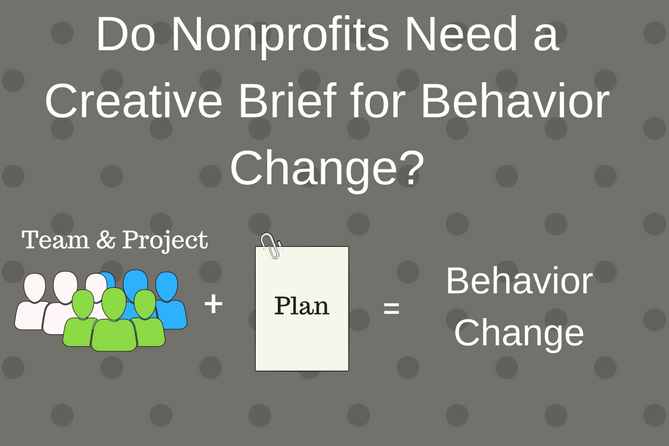How to Use Your Core Values to Inspire, Retain, and Energize Your Team
For the last few decades, but especially so in recent years, people are seeking out more than just an income from their place of employment. More...


Having clear communication and a solid creative process between agency team members and your nonprofit management team is imperative. It is important to get it right so that everyone can move toward the same project goals, especially when resources are limited. We’ve written about developing a plan for your next video and preparing for your next print project. We’ve also discussed marketing consistency. All of these have one thing in common - the creative brief.
We all know that for clear communication there needs to be consistent communication. Part of consistency is the idea that everyone needs to be on the same page to move forward on goals and objectives. This is especially vital when developing resources for your next outreach and grassroots communication intiaitve is involved.
A creative brief can keep everyone on track and accountable. The brief helps you to develop resources and tools that will speak to your commuity, and also helps others to understand what they need to do. Every new project needs a separate creative brief. Every project has its nuances and your team needs to see that and work towards helping others see that. This is especially important when there are many stakeholders connected to your organzation. Having everyone understand and work towards a unified message is essential.
These are the basic questions you need to have clear answers for. A good brief is the foundation of every project you do. It provides the goals, objectives, audience and messaging. It includes any important information needed to work on a specific client project team. It is the document that aligns the members of client and agency team.
There are many different styles of creative brief. It is important to develop one that works for your joint client-agency team for your changemaking project. If you are planning a website, that brief may be referred to as a website development brief and it may need to answer different questions than a brief for a video series. While both may use the same foundational document (a marketing plan or creative platform) as a starting point, your video brief would include distribution specs as opposed to content navigation.
A creative brief needs to include all the elements you consider necessary to successfully complete your next project.
Taking your team through the process of answering these questions can lead to a new or more focused direction. This document unifies your creative team and your organization's stakeholders, which could include your management team, your board of trustees, and perhaps key donors.
As time goes on, take a look at whether your brief needs to be updated for new channels and technology. For example, if your next project will use digital marketing, you could also ask the team to consider the following questions.
Creative briefs need not be long. They are called a brief for a reason. Think Hemingway not Tolkien. Projects begin with an idea. Good projects begin with an idea and the answers in your brief about the why and the how.
The Change Conversations blog is where changemakers find inspiration and insights on the power of mission-driven communication to create the change you want to see.
© 2009- to present, Marketing Partners, Inc. Content on the Change Conversations blog is licensed under a Creative Commons Attribution-Noncommercial-NoDerivs 3.0 United States License to share as much as you like. Please attribute to Change Conversations and link to ChangeConversations.
Creative Commons License may not apply to images used within posts and pages on this website. See hover-over or links for attribution associated with each image and licensing information.

For the last few decades, but especially so in recent years, people are seeking out more than just an income from their place of employment. More...

You know nonprofit organizations need websites just as small businesses do, but you may be surprised to learn nonprofit sites can be more complex and...

In today’s rapidly evolving media landscape, understanding where and how your story is told isn’t just strategic—it’s essential. How you communicate...